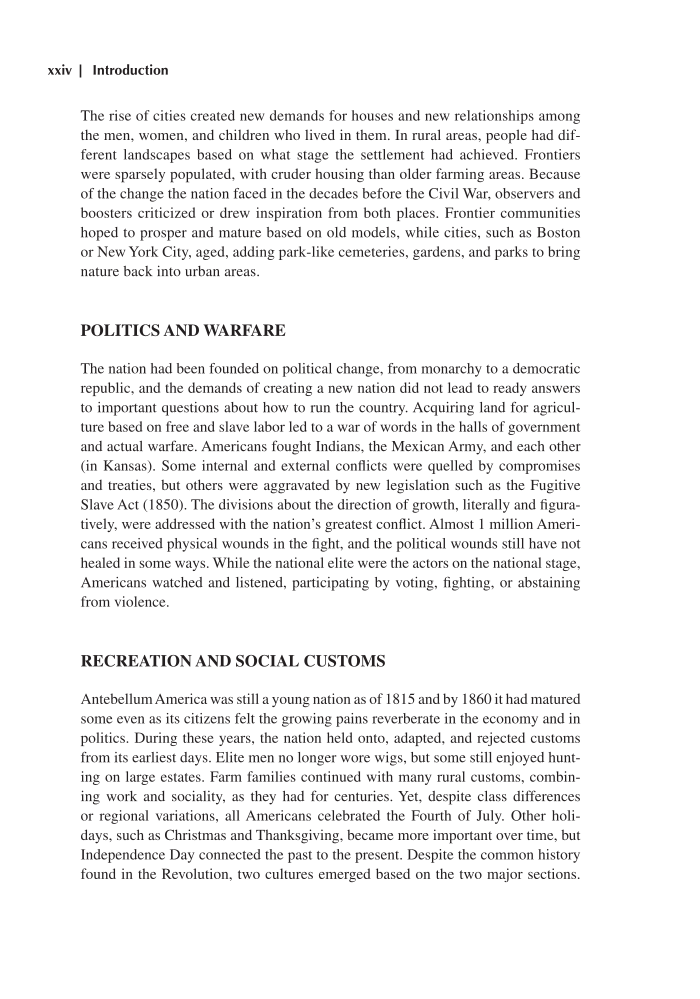xxiv Introduction The rise of cities created new demands for houses and new relationships among the men, women, and children who lived in them. In rural areas, people had dif- ferent landscapes based on what stage the settlement had achieved. Frontiers were sparsely populated, with cruder housing than older farming areas. Because of the change the nation faced in the decades before the Civil War, observers and boosters criticized or drew inspiration from both places. Frontier communities hoped to prosper and mature based on old models, while cities, such as Boston or New York City, aged, adding park-like cemeteries, gardens, and parks to bring nature back into urban areas. POLITICS AND WARFARE The nation had been founded on political change, from monarchy to a democratic republic, and the demands of creating a new nation did not lead to ready answers to important questions about how to run the country. Acquiring land for agricul- ture based on free and slave labor led to a war of words in the halls of government and actual warfare. Americans fought Indians, the Mexican Army, and each other (in Kansas). Some internal and external conflicts were quelled by compromises and treaties, but others were aggravated by new legislation such as the Fugitive Slave Act (1850). The divisions about the direction of growth, literally and figura- tively, were addressed with the nation’s greatest conflict. Almost 1 million Ameri- cans received physical wounds in the fight, and the political wounds still have not healed in some ways. While the national elite were the actors on the national stage, Americans watched and listened, participating by voting, fighting, or abstaining from violence. RECREATION AND SOCIAL CUSTOMS Antebellum America was still a young nation as of 1815 and by 1860 it had matured some even as its citizens felt the growing pains reverberate in the economy and in politics. During these years, the nation held onto, adapted, and rejected customs from its earliest days. Elite men no longer wore wigs, but some still enjoyed hunt- ing on large estates. Farm families continued with many rural customs, combin- ing work and sociality, as they had for centuries. Yet, despite class differences or regional variations, all Americans celebrated the Fourth of July. Other holi- days, such as Christmas and Thanksgiving, became more important over time, but Independence Day connected the past to the present. Despite the common history found in the Revolution, two cultures emerged based on the two major sections.
Document Details My Account Print multiple pages
Print
You have printed 0 times in the last 24 hours.
Your print count will reset on at .
You may print 0 more time(s) before then.
You may print a maximum of 0 pages at a time.



























































































































































































































































































































































































































































































































































































































































































































































































































































































































































































































































































































